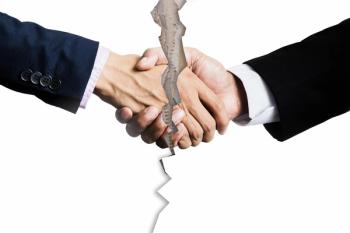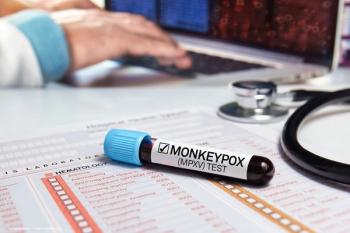
Active lifestyle is tied to reduced visual field decline in primary open angle glaucoma
Key Takeaways
- Increased physical activity is an independent predictor of slower VF MD loss in patients with POAG, as shown by Seo and colleagues.
- Higher MET-minutes and active PAI categories are associated with reduced VF MD loss rates.
New research findings reveal that increased physical activity significantly slows visual field loss in patients with glaucoma, highlighting exercise as a potential protective factor.
Je Hyun Seo, MD, PhD, and colleagues reported that increased amounts of time spent in physical activity are an independent predictor of a slower rate of visual field mean deviation (VF MD) loss in patients with primary open-angle glaucoma (POAG). They published their results in the Journal of Glaucoma.1
Seo is the first study author from the Viterbi Family Department of Ophthalmology, Hamilton Glaucoma Center at the University of California, San Diego Shiley Eye Institute, and the Veterans Medical Research Institute, Veterans Health Service Medical Center in Seoul, South Korea. He was joined in this study by colleagues from the Bernard and Shirlee Brown Glaucoma Research Laboratory, Department of Ophthalmology, Edward S. Harkness Eye Institute, Columbia University Irving Medical Center in New York, New York, and the Department of Ophthalmology and Vision Sciences, Heersink School of Medicine, The University of Alabama at Birmingham.
Physical activity study methods and results
The investigators conducted this longitudinal study with the goal of determining how physical activity affects the progression of the VF damage in patients with POAG.
The study participants with POAG had undergone 5 or more visits and had 2 or more years of follow-up VF exams. All patients completed a physical activity questionnaire at baseline.
The investigators explained that the physical activity levels were assessed using the physical activity index (PAI), metabolic equivalents of task (MET)-minutes, and walking pace.
Seo and colleagues reported that 131 eyes of 80 patients (median patient age, 68.6 years; IQR, 59.3-77.8 years) with POAG were included; the median follow-up time was 4.9 years (IQR, 4.0-6.7 years). The median baseline VF MD was −3.5 (IQR, −8.3 to −1.3).
The univariable analysis revealed that slower VF MD loss was associated with the active PAI category vs the inactive PAI category (0.30 dB/y; 95% CI, 0.01-0.58; P = .041) and higher levels of physical activity (0.14 dB/y per 1000 MET-min; 95% CI, 0.01-0.27; P = .036).
They did not find a significant association between the rate of VF MD loss for the baseline VF MD (P = .263) and walking pace (P > .05).
The multivariable analysis, which included glaucoma severity and other covariates, found that the slower VF MD loss was associated with higher levels of physical activity (0.15 dB/y per 1000 MET-minute; 95% CI, 0.02-0.28; P = .024).
The investigators concluded that the higher levels of physical activity are independent predictors of a slower rate of VF MD loss. They advised that further research should explore whether increased rates of physical activity protect against glaucoma progression.
Related research
Investigators of another study out of the Wilmer Eye Institute at The Johns Hopkins University School of Medicine, Baltimore, also reported the beneficial effects of physical activity on slower VF loss.2
First author Moon Jeong Lee, MD, and colleagues conducted a longitudinal observational study that included older adults who were glaucoma suspects or had frank glaucoma.
Participants wore accelerometers for 1 week to measure the daily average steps, minutes of moderate-to-vigorous physical activity (MVPA), and minutes of nonsedentary activity. The main outcome was the point-wise changes in the VF sensitivity associated with physical activity.
A total of 141 patients (mean age, 64.9 ± 5.8 years) were enrolled. The eye MD at the time of physical activity assessment was −6.6 dB, and the average number of daily steps was 5613 ± 3158. The unadjusted average rate of VF loss was 0.36 dB/y (95% CI, −0.37 to −0.35). Multivariable analysis showed that slower VF loss was observed when patients recorded higher numbers of steps (+0.007 dB/y/1000 daily steps; P < .001), more MVPA (+0.003 dB/y/10 more minutes of MVPA daily; P < .001), and more nonsedentary activity (+0.007 dB/y/30 more minutes of nonsedentary time daily, P = .005).
The factors associated with a faster rate of VF loss included older age, non-Caucasian race, glaucoma surgery, cataract surgery, and moderate baseline VF damage (−6 dB ≥ MD > –12 dB) vs mild VF damage (MD > −6 dB). Similar associations between the accelerometer-measured physical activity at baseline and rates of VF loss were observed over other periods (eg, within 1, 3, and 5 years of activity assessment), the authors reported.
They concluded, “Increased walking, greater time spent doing moderate-to-vigorous physical activity, and more time spent in nonsedentary activity were associated with slower rates of VF loss in a treated population of [patients with] glaucoma, with an additional 5000 daily steps or 2.6 hours of nonsedentary physical activity decreasing the average rate of VF loss by roughly 10%. Future prospective studies should determine if physical activity can slow VF loss in glaucoma and/or if progressive VF loss results in activity restriction. If the former is confirmed, this would mark physical activity as a novel modifiable risk factor for preventing glaucoma damage.”
References
Seo JH, Nishida T, Moghimi S, et al. Impact of physical activity levels on visual field progression in individuals with glaucoma. J Glaucoma. 2025;34(7):499-506. doi:10.1097/IJG.0000000000002576
Lee MJ, Wang J, Friedman DS, Boland MV, De Moraes CG, Ramulu PY. Greater physical activity is associated with slower visual field loss in glaucoma. Ophthalmology. 2018;126(7):958-964. doi:
10.1016/j.ophtha.2018.10.012
Newsletter
Don’t miss out—get Ophthalmology Times updates on the latest clinical advancements and expert interviews, straight to your inbox.













































